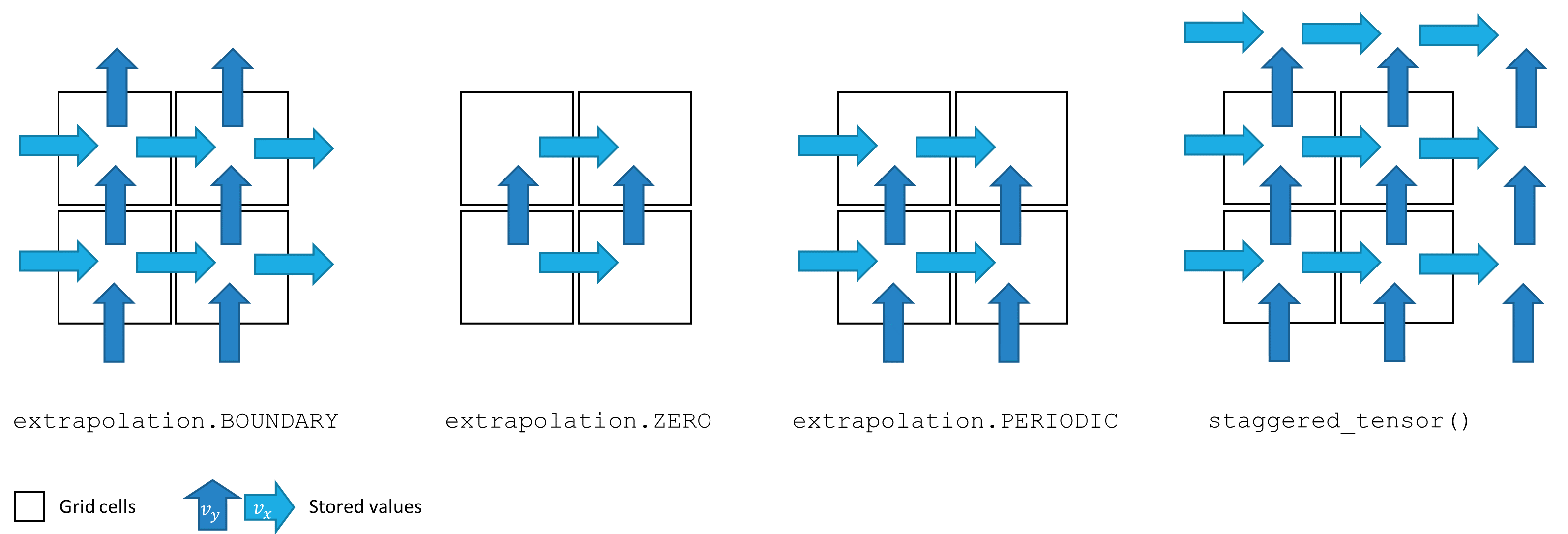Staggered grids¶
Staggered grids are a key component of the marker-and-cell (MAC) method [Harlow and Welch 1965]. They sample the velocity components not at the cell centers but in staggered form at the corresponding face centers. Their main advantage is that the divergence of a cell can be computed exactly.
ΦFlow only stores valid velocity values in memory. This may require non-uniform tensors for the values since the numbers of horizontal and vertical faces are generally not equal. Depending on the boundary conditions, the outer-most values may also be redundant and, thus, not stored.

ΦFlow represents staggered grids as instances of StaggeredGrid.
They have the same properties as CenteredGrid but the values field may reference a
non-uniform tensor
to reflect the varying number of x, y and z sample points.